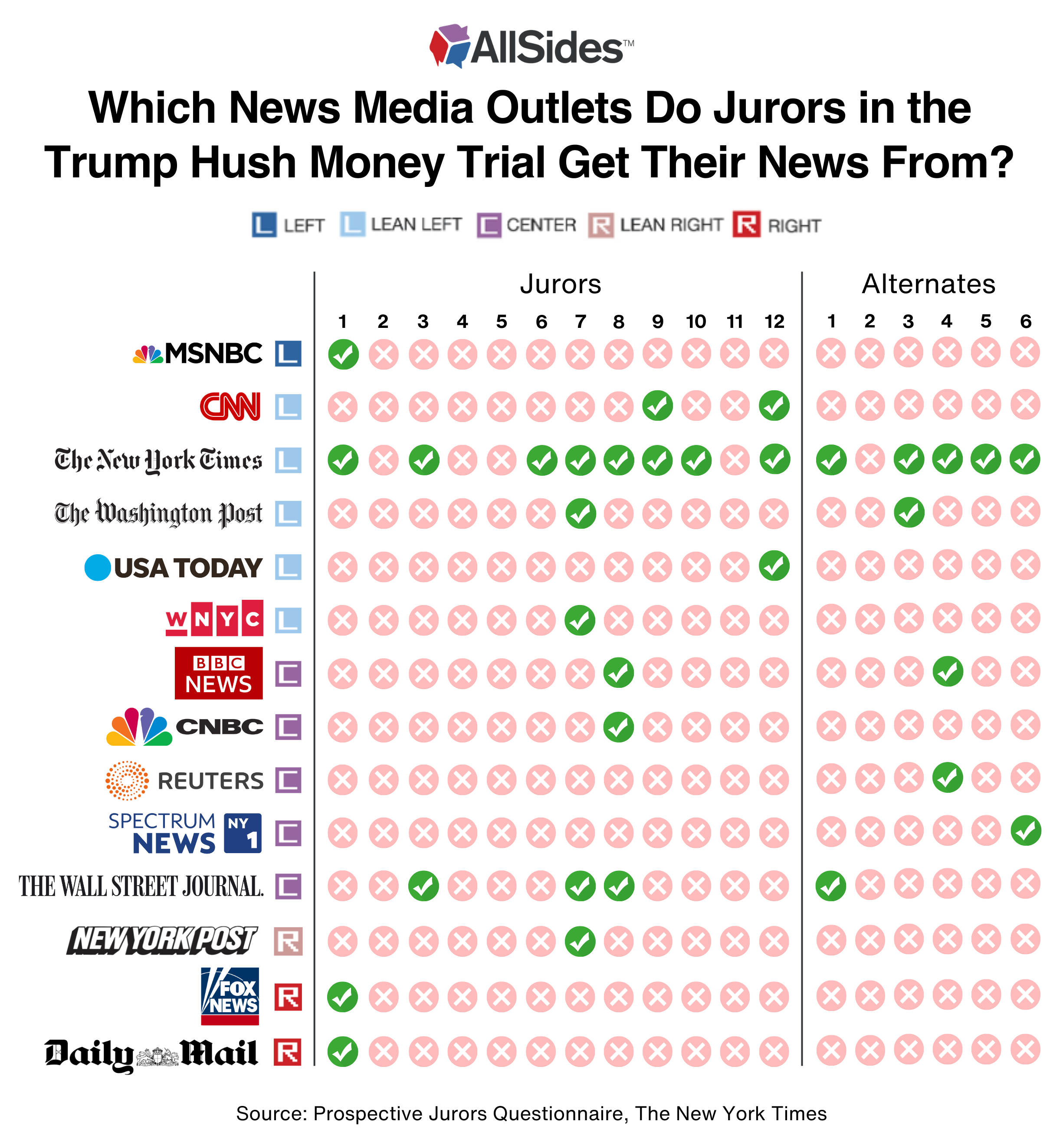How Media Bias Shaped Jury Selection in Trump’s Hush Money Trial

Jurors in Donald Trump’s hush money trial were asked: “What are your main sources of news and commentary?” as part of a 42-question juror questionnaire, which the lawyers used to help determine how a juror may rule in the case. Here were their responses:

Note: The questionare also included Google, TikTok, Facebook, X (formerly Twitter), and Truth Social. We have excluded those from the above chart because they are search engines and therefore do not have an AllSides Media Bias Rating.
Where someone gets their news and commentary may indicate their bias, because we tend to seek out information that confirms our beliefs. For example, if someone reads Fox News (Right bias), The Daily Wire (Right bias), Breitbart (Right bias), and The New York Post (Lean Right bias), then one may presume the person is on the right and tends to read news that agrees with their beliefs.
However, the news someone consumes can also unconsciously shape their bias. Take juror #8—if they consume CNBC (Center, but nearly in the Lean Left category), BBC (again, Center, but nearly Lean Left), and the New York Times (Lean Left) with the perception that they are receiving objective reporting, they may have a biased perspective without realizing it.
Lean Left outlets tend to cover stories of more importance to the left, showing bias through story choice. These outlets also tend to display word choice bias, such as describing unauthorized migrants in the U.S. as undocumented immigrants instead of illegal, and may omit context someone on the right would consider relevant.
When someone is left unaware of the biases within news coverage, they tend to remain stuck in a filter bubble and unaware of other perspectives. This often perpetuates the possibility of media manipulation, leading people down a path that ultimately causes distrust and dissatisfaction in news media as a whole.
Media bias leads to a cycle—reading biased news without an intentional balanced news diet may lead to biased viewpoints, which might ultimately lead people to seek out more biased coverage.
There’s nothing wrong with having a biased view on a subject as long as that view is based on an informed look at the issue, which is impossible when only consuming media that’s biased toward one side.
Shoutout to juror #1, who reads two outlets on the right and two on the left, to get a more balanced perspective! AllSides balanced news helps provide the full picture by showing a left, right, and center perspective on every major news story, pointing out bias so that media manipulation may one day be a story of the past.
Clare Ashcraft, Bridging & Bias Specialist at AllSides, Center bias.
Graphics and Review by Andrew Weinzierl, Bias Research Manager & Data Journalist, Lean Left bias.
Reviewed by Johnathon Held, News & Bias Assistant (Lean Right bias).


May 6th, 2024

May 6th, 2024

May 3rd, 2024